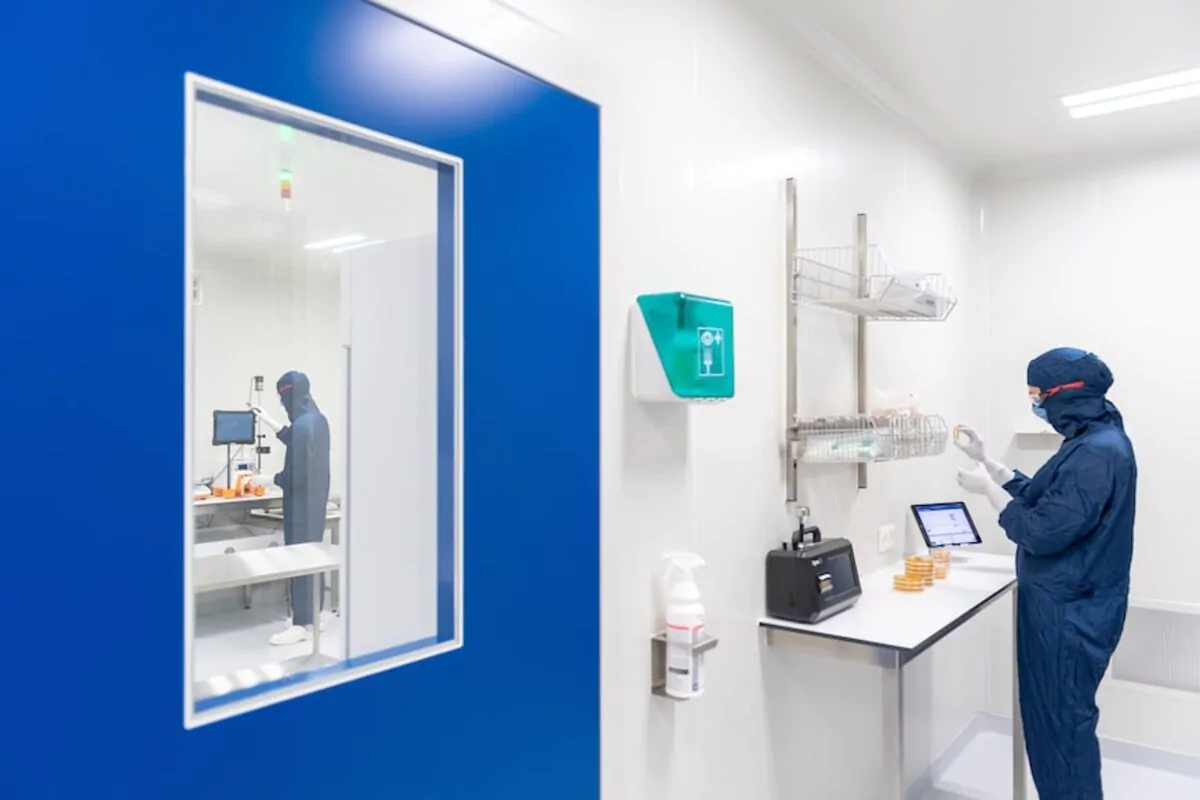

Maintaining a controlled environment is vital because cleanroom technology is crucial in various industries, including pharmaceuticals, microelectronics, and healthcare. According to Yahoo! Finance, the Cleanroom Technology Market is estimated to reach US$ 16.9 Billion by 2028, growing at a CAGR of 4.9% from 2022 to 2028.
The fascinating science behind cleanroom technology involves careful planning, design, and operation to minimize the risk of contamination. In this article, we discuss the critical aspects of controlled environments in cleanroom technology and their importance in ensuring the quality and safety of products.
According to American Cleanroom Systems, cleanrooms are categorized based on the concentration of particles allowed in the environment, with standards like ISO 14644 ensuring consistency in their design and operation. These classifications range from ISO Class 1 (most stringent) to ISO Class 9 (least authoritarian), specifying permissible particle counts and sizes.
The classification limits the number and size of particles present in the air, usually measured in particles per cubic meter. ISO 5 cleanrooms fall in the middle of this spectrum. The maximum allowable particle count in an ISO 5 cleanroom is typically set at 3,520 particles of 0.5 micrometers or larger per cubic meter.
Air filtration is a fundamental component of cleanroom technology. High-efficiency particulate air (HEPA) filters remove particles from the air, ensuring a clean environment.
According to a document published by the National Institutes of Health, these filters can remove particles as small as 0.3 micrometers with an efficiency of 99.97%. The placement, maintenance, and regular testing of HEPA filters are crucial for optimal cleanroom performance. Particle control measures, such as air showers, sticky mats, and gowning protocols, further minimize contamination risks.
Besides particle control, cleanroom technology focuses on precise control over temperature, humidity, and pressure. Strictly controlling these parameters is essential to ensure product stability, prevent electrostatic discharge, and create comfortable working conditions for personnel.
Advanced HVAC systems, humidification/dehumidification units, and pressure differentials are utilized to achieve the desired levels and control fluctuations within tight tolerances.
Cleanroom design involves arranging space, selecting materials, and applying surface finishes to prevent contamination and enable efficient cleaning. As highlighted in a post by Cleanroom Technology, the initial step in building a cleanroom is determining the required level of cleanliness that aligns with your specific operations. Considering the products you manufacture, they should also align with your customer’s expectations.
The design process incorporates factors like airflow patterns, placement of equipment, and the division of clean areas. To minimize the release of particles, materials like stainless steel and epoxy resin are frequently employed for surfaces, furniture, and equipment. Additionally, efforts are made to minimize static electricity generation.
Cleanroom monitoring and control systems are crucial in maintaining a controlled environment. These systems continuously monitor critical parameters like particle counts, temperature, humidity, and pressure differentials, providing real-time data for analysis and control.
Advanced sensors are strategically placed throughout the cleanroom to collect accurate and reliable data. Particle counters measure particles’ concentration and size distribution in the air, ensuring compliance with specified cleanliness levels. Data loggers capture and record the sensor data, creating a historical record of environmental conditions.
These records are invaluable for assessing trends, identifying potential issues, and implementing proactive measures to prevent deviations. Automated control systems integrate with the monitoring data to provide real-time feedback and adjustment of HVAC systems, ensuring precise control of environmental parameters.
Personnel training and adherence to cleanroom protocols are vital for maintaining a contamination-free environment. Cleanroom protocols encompass a range of procedures and guidelines that employees must follow to minimize human-induced contamination.
Stringent gowning procedures ensure that individuals entering the cleanroom are appropriately attired in cleanroom garments. This helps prevent the shedding of particles and microorganisms from the personnel into the controlled environment.
Cleanroom behavior guidelines are established to educate personnel on proper conduct within the cleanroom. This includes avoiding unnecessary movements, minimizing talking, and refraining from actions that may generate particles or disrupt the cleanroom environment.
Cleanroom technology is an integral part of many businesses, offering regulated settings to ensure product quality and safety. Cleanroom science entails thorough planning, design, and operation to reduce the danger of contamination.
Cleanroom technology guarantees the maintenance of ideal cleanliness levels through correct cleanroom categorization, air filtration and particle control, humidity, temperature, pressure management, design considerations, control and monitoring systems, and employee training and protocols.
As the need for cleanroom technology grows, enterprises must keep up with innovations and industry standards to fulfill the increasingly strict criteria for product safety and quality.
Read Also: What is the Free Tool to Increase Instagram Followers?
POD Elf Bars are compact, disposable vaping devices that offer a convenient and flavorful experience.…
Finding the right dentures in Calgary can seem like a daunting task, but it doesn't…
Migraine are more than just a headache. It is a neurological condition that affects millions…
In today's fast-paced world, translation is more important than ever. Whether you're an aspiring novelist…
Hey there, fellow adventurers! If you're a cyclist looking for your next big thrill, Italy…
We’re now living in the early days of Web3, the next evolutionary step of the…